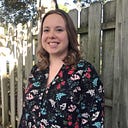Member-only story
The Librarian Who Uncovered a National Disgrace
A Cold War-era secret wouldn’t evade Sandra Marlow for long
A concise yet illuminating history of the Walter E. Fernald State School is at once a sine qua non and an astoundingly difficult and nuanced proposition. Inseparable from the institution’s past is the unquestionable influence of a social movement revelatory of the ugly underbelly of human nature: the eugenics movement. Originating from the Greek eugenes, meaning “good in stock, hereditarily endowed with noble qualities,” the term eugenics was coined in 1883 by Francis Galton, Charles Darwin’s younger half-cousin. Galton’s initial subject was positive eugenics, or the improvement of future generations through exhortation of the best (viz., the wealthiest or most intelligent) in society to have more children.
An antithesis exists for eugenics and, more specifically, positive eugenics. Toward the end of his life, Galton espoused the belief that the “unfit” should not procreate. The term dysgenics was used to describe reproduction among “degenerates” (e.g., the mentally ill or disabled). Negative eugenics, conceptualized in 1907 by British physician C. W. Saleeby, involves the prevention of reproduction by those considered to be defective, usually by segregation or sterilization. It is this negative variety that blossomed in popularity in the…
